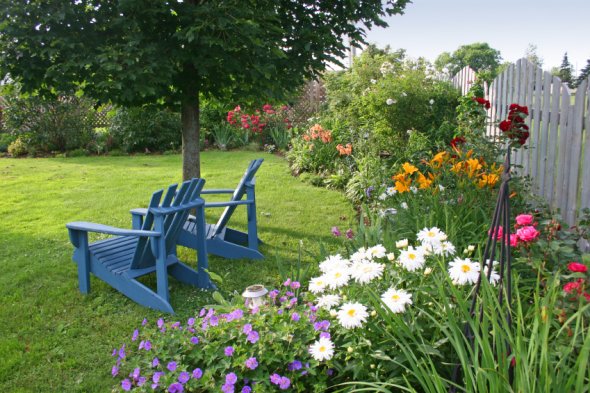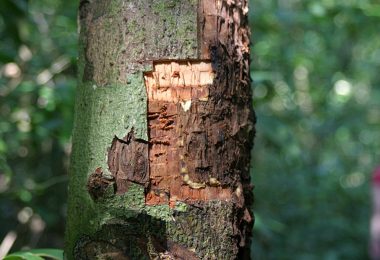
The landscape designer is in many ways like an interior decorator. The ultimate aim is to fill space in an artistic manner – which is pleasing to the eye.
In order to cover interior space, the interior designer may prescribe a Persian throw rug to cover a large floor area, and a large print or beveled mirror to mask a large wall space. As a similar task the landscape designer may suggest a low-growing ground cover or a series of low-growing shrubs to cover space in the outdoor environment.
To soften the vertical plane, instead of a picture or mirror the landscape designer would choose a large shrub or tree to soften a roof-line, screen offensive views, or create an overhead canopy to provide summer shade for the patio.
Proper Tree Selection is Important
Many Sacramento area Landscape Designers, Nurseryman and Arborists are all too familiar with the effects of poor tree selection, and the results thereof. Poor tree species selection results in cracked cement patios, walkways and in some instances foundations.
Trees with shallow and aggressive root systems can undermine concrete and cause lifting and subsequent breakage. This ultimately results in tree removal and expensive concrete repair.
While deep watering will often help to establish a deeper root zone, certain tree species are natural surface rooters, such as the fruitless and fruiting mulberry and liquidamber trees. If you do plant these types of trees, expect surface root growth. (It should be noted that trees which are known to have good roots systems can still break concrete, but you can increase your time before damage occurs, and possibly avoid damage.) Soil characteristics and watering techniques can also influence root growth depth..
Other types of tree problems include: prone to insect attack and/or disease, limb failure, messy trees, production of seeds that are excessively viable and germinate in flower beds and poor landscape placement.
Limit the number of species – especially in the small garden
One of this and one of that gets too busy. In general, trees of a like kind look good in groupings, and trees with conical or upright growth habits look best when utilized in a grove planting. Trees with rounded crowns look best when used as an single accent or a break between a grove planting.
As an example, use the 3-1-5 method of arrangement. For instance, start at one fence line corner with three Jacqmontii White Birch. (Superior clone selection – don’t plant European White seedlings in hot summer climates as they are subject to insect and structural problems)
Then continuing toward the opposite corner spot a Nyssa sylvatica (Tupelo Tree) as a single break, then spot a grove of five ‘Aptos Blue’ coastal redwoods. This arrangement of contrasting shapes develops interest and consistency.
Here you have yellow fall color, red fall color, and an evergreen mass through the winter. In addition, remember that proper tree spacing is critical to a well-balanced landscape






ordering androxal buy for cheap
order androxal generic uk next day delivery
online order enclomiphene purchase uk
order enclomiphene us prices
get rifaximin purchase online from canada
ordering rifaximin generic available in united states
buy cheap xifaxan generic europe
cheapest buy xifaxan cheap with prescription
ordering staxyn generic uae
online order staxyn buy in the uk
order avodart cheap mastercard
online order avodart generic canada
online order dutasteride no prescription mastercard
buy dutasteride generic for sale
online order flexeril cyclobenzaprine generic brand
discount flexeril cyclobenzaprine generic uk
where can you get gabapentin without a prescription
ordering gabapentin non prescription online
jak získat dámské kamagra ad whas náklady
koupit kamagra online trezor
sans ordonnance kamagra sans ordonnance en ligne
pharmacie canadienne en ligne sans ordonnance kamagra
itraconazole no prior script
cheapest buy itraconazole generic uk buy
how to buy fildena canada discount
buy fildena generic fildena